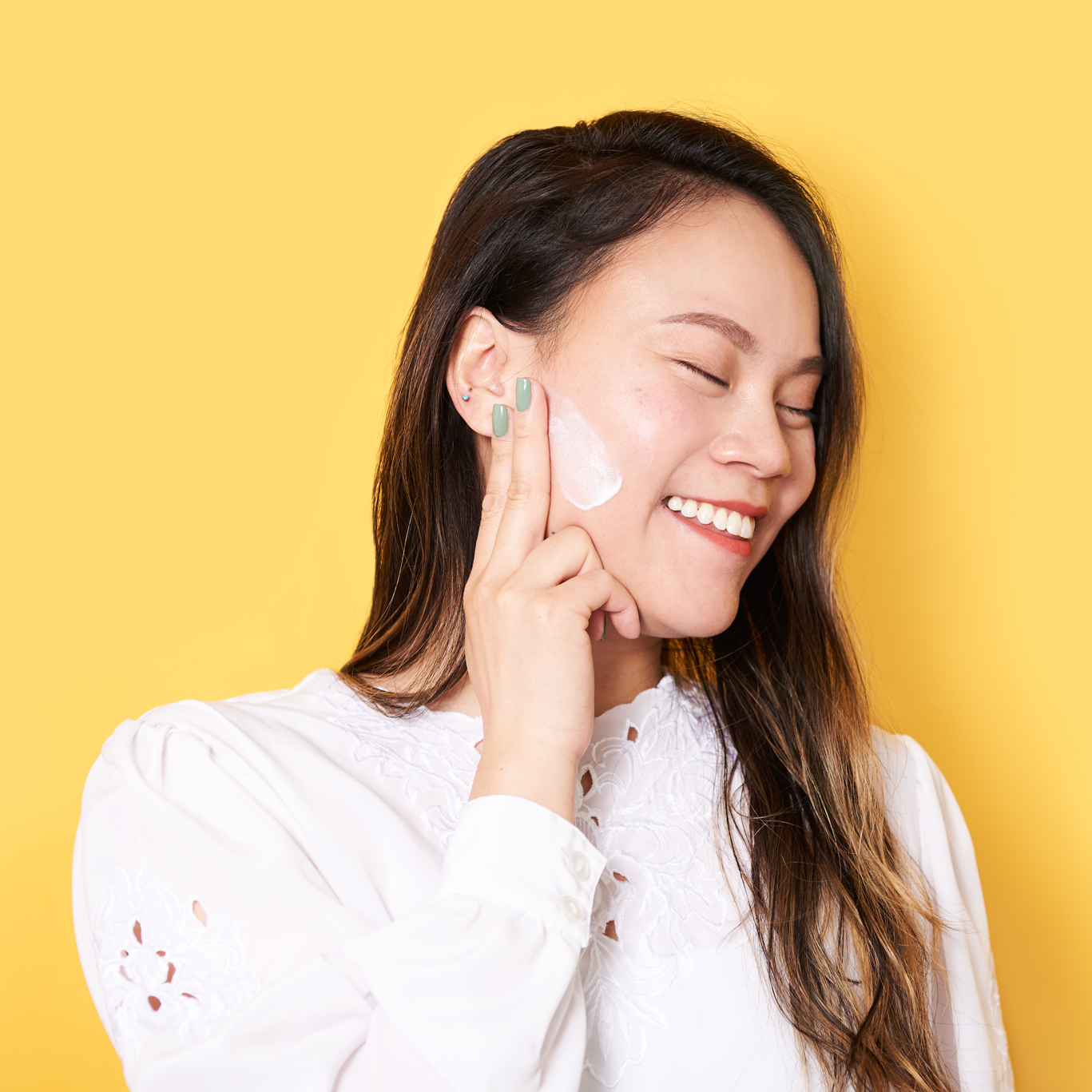You know sunscreen is important, but when it begins to pill up and give a flaky appearance, skipping the step may be tempting. Here’s what to do instead.
SPF: Your sweet savior. Before anything, I need to emphasize the importance of why sunscreen is so necessary, rain or shine, which you can read here.
Now on to the main event: Pilling.
Pilling is not peeling. When you hear the term “pilling” in skin care, it means that products applied topically haven’t fully absorbed into the skin which leads to visible flaking and grittiness. Those little tiny balls? Pilling. This can be caused by a number of things, mainly coming down to the ingredients, skin preparation and how you’re applying everything. Inevitably, some ingredients are more prone to pilling than others, and you’ll most commonly see it occurring with silicone-based products.
Looking at ingredient lists is key to distinguish what’ll get along with each other. If you’re using a heavier cream or oil underneath your SPF, try to pay attention if it has silicones in it. Too much can be too much.
Pilling can also occur if your skin isn’t ready to absorb skin care properly. Products absorb better onto the skin when it’s prepared in a proper manner. A good cleanse and tone is key to having a good base in general, and exfoliating during the week keeps dead skin cells from interrupting the absorption process. Alongside, make sure you’re not using too much product. Using an excessive amount of cream or product won’t do anything but sit on the skin and won’t allow SPF to properly absorb.
For more tips, I spoke to my “skinsta” friends who wear makeup regularly to hear how they prevent sunscreen from pilling with makeup.
“I usually skip moisturizer to avoid pilling, and tap on the product with a cushion.” – Nusrat from @iiroshnii
Editor’s Note: Try the Cell Fusion C Laser Sunscreen 100 SPF 50+/PA+++ and tap it on with a cushion.This lightweight anti-aging sunscreen helps to block UV rays while repairing and protecting skin with peptides, ceramides, and collagen.
“Pilling usually occurs at the makeup step for me. I try to avoid products that have sticky finishes because those tend to pill. I’ll focus on more watery products. I also avoid using makeup primer since it tends to make my SPF or foundations with a lot of pigment pill. Skin tints work better. When I’m using a heavier, full coverage foundation, no matter how I apply it, whether it be rubbing, makeup sponge or a brush, it tends to pill. Because skin tints don’t really “set” or dry down, I don’t have that issue with them.” – Sally from @actually.skin
Editor’s Note: If you’re looking for a lightweight sunscreen that wears well under makeup, go for the Neogen Day-Light Protection Airy Sunscreen. Formulated with aloe, avocado, acai, and hibiscus extracts, this silicone-free and non-greasy sunscreen can be used as both a moisturizer and SPF.
I personally haven’t experienced any sunscreen pilling issues or pilling in general. I always try my best to have my skin prepared with a proper routine and exfoliation 3-4 times a week. If I’m wearing a heavy makeup look which is super rare, I’ll usually use a physical exfoliant to prep the epidermis to create an instantly smooth canvas.
RELATED: How to Use At-Home Chemical Peels
Ninety percent of the time though, I use a chemical exfoliant because it penetrates deeper into the skin to help remove the dull and flaky layer of my skin. It’s just more effective!
Always remember, prepping the skin allows not only for better product absorption, but a healthy skin barrier overall.
